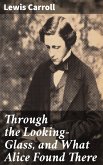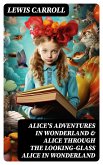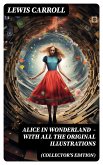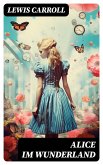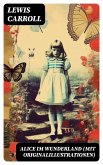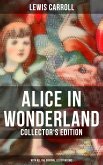In "Through the Looking-Glass, and What Alice Found There," Lewis Carroll constructs a whimsical yet profound sequel to his beloved "Alice's Adventures in Wonderland." This novel is marked by its playful use of language, inventive verse, and intricate wordplay, embodying the nonsensical logic that defines Carroll's literary style. The narrative unfolds in a fantastical realm where time runs backward, exploring themes of identity, transformation, and the nature of reality through a series of dreamlike encounters. This richly layered work serves as both a captivating tale for children and a sharp commentary on the adult world, reflecting Victorian anxieties and philosophical questions.
Dieser Download kann aus rechtlichen Gründen nur mit Rechnungsadresse in A, B, BG, CY, CZ, D, DK, EW, E, FIN, F, GR, H, IRL, I, LT, L, LR, M, NL, PL, P, R, S, SLO, SK ausgeliefert werden.



